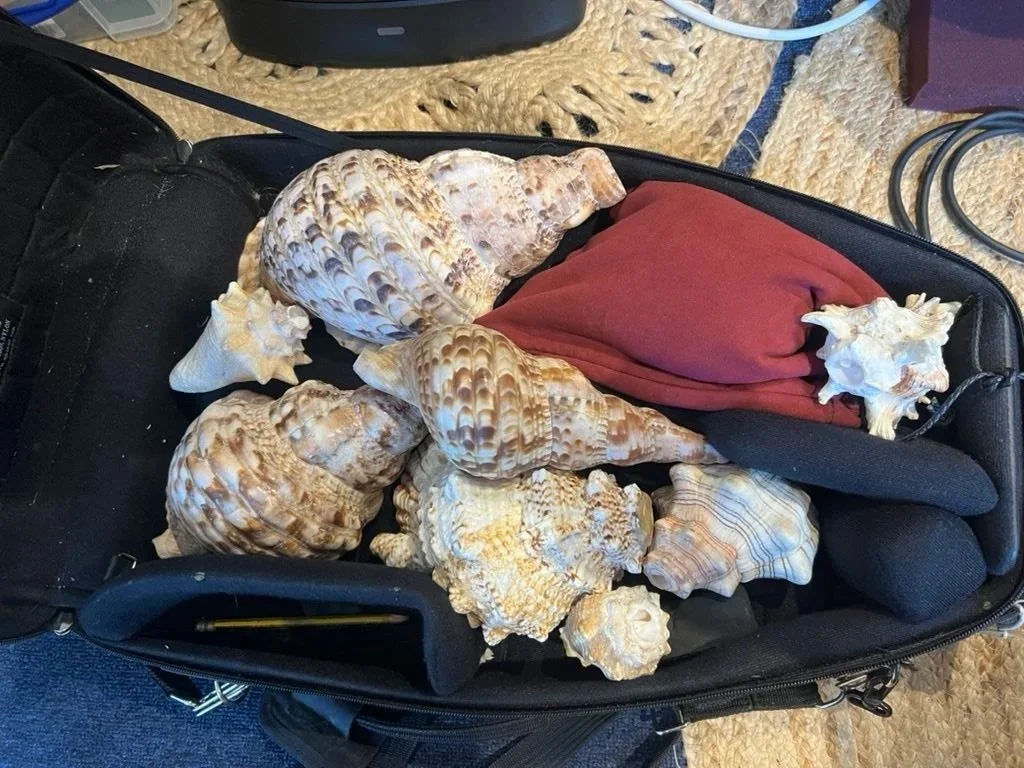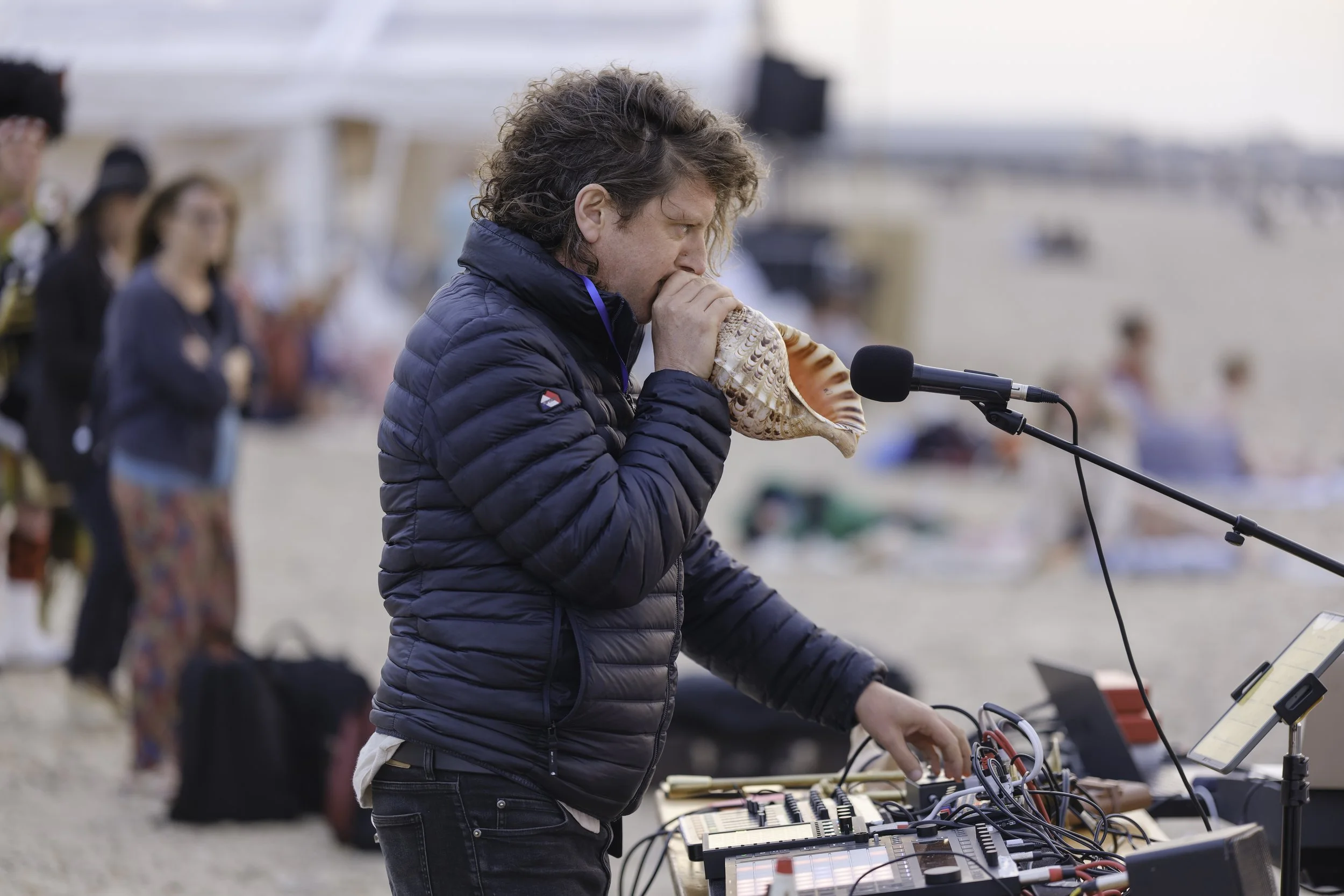
About Shellectronica
I first got interested in shell instruments while exploring the pre‑history of music in my podcast and live shows — part of a wider dive into what music is, why it exists, and how humans have made it across time.
These shells — often called conches, but actually including triton shells, frog shells and more — have been used as instruments for tens of thousands of years. Played live, they still have the power to move us in ways that feel both ancient and immediate.
There was an instant intrigue when I started performing with them: not just from the sound itself, but from the stories behind the shells and how they bridge that vast gap between our earliest musical ancestors and today’s electronic tools.
Using cutting‑edge processing — pitch shifting, granular synthesis, harmonising, looping — I build immersive soundscapes live, entirely from the acoustic sound of the shells. No samples, no backing tracks, no synths. Just breath, shell, and signal path.
It’s part conchert, part sound bath, part sonic time travel — a live electronic music performance using nothing but natural shell sounds and modern audio manipulation.
I’ve performed and recorded with these shell instruments at the Natural History Museum, Hammersmith Apollo, National Maritime Museum , King’s Place , Café Oto and festivals across the UK. You can even hear a conch shell solo in Fluoresce, a track I wrote with Hackney Colliery Band — part of our Collaborations: Volume Two album — inspired in part by my occasional side hustle as an underwater photographer.
Where the Shells Come From
There’s no ancient ceremony or secret dive site involved (even though I am a keen diver and, believe it or not, have a side hustle as an underwater photographer). Most of the shells I use come from eBay…
They usually turn up when someone’s clearing out a relative’s old aquarium collection or beach holiday display. It feels more ethical — and more interesting — than buying freshly sourced shells. Each one has its own story, texture, tuning, and quirks.
Once they arrive, I turn them into playable instruments with nothing more than a hacksaw, a pair of pliers, and a deep breath. Some of them I even make live on stage — cutting the mouthpiece and playing it on the spot. It’s part of the show, part of the risk, and a reminder that these are real, physical objects with a history of their own.
But it also ties this process of making into a deep, ancient history of humans using tools around them to create instruments of abstract creative expression. As part of my performances, I often dig into this history, drawing a line between the construction of these musical shells which transform air into music and the electronic processors that they are run through, which transform electricity into music. All part of the same, extremely ancient story of human creative expression.
Electronic manipulation
Every sound in one of my ‘concherts’ comes from the shells themselves. But, though our distant ancestors would have played these in resonant spaces like caves in order to inspire a sense of the sublime or a connection with nature and environment, I often perform at festivals or venues without the amazing resonances and natural acoustics that these places have.
Instead, I use some of the very latest pieces of audio manipulation technology to create epic soundscapes from nothing but breath to try to inspire some of these same feelings of contemplation, wonder and scale. For those interested in my setup, this can consist of some or all of the following:
Eventide H9000
SOMA Labs Cosmos
Beetlecrab Tempera
Torso Electronics S-4
Ableton Push Standalone
If you’re interested in learning more, drop me a line.

